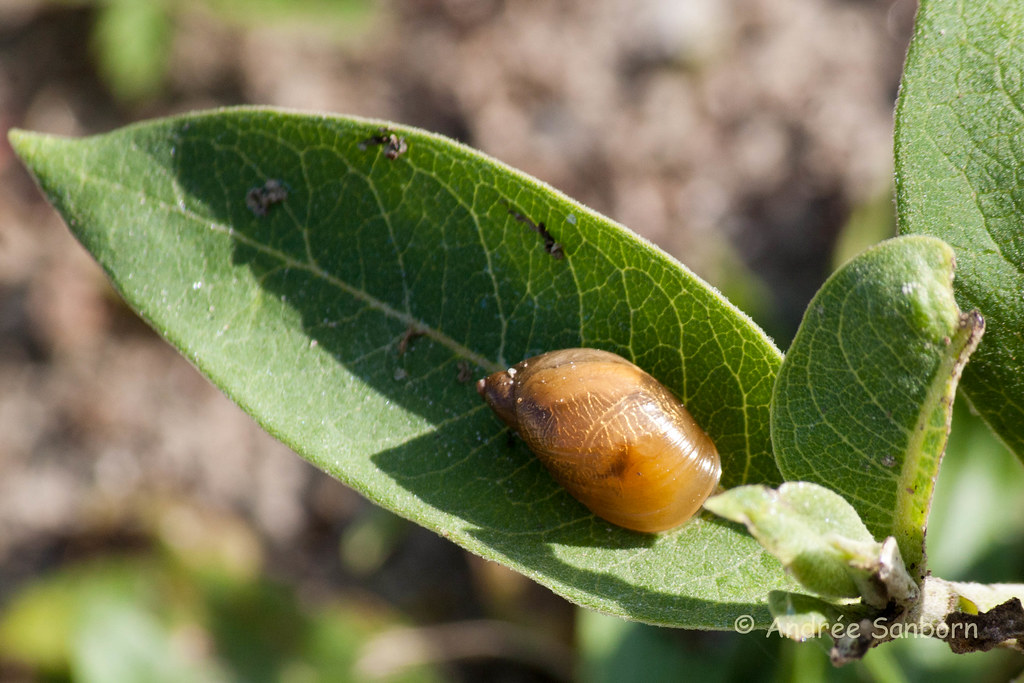There is a gentleman in British Columbia who helped me partially identify my land snails (see my Flickr Land Snail Set here). His mollus.ca site is about Canadian snails. Since Canada is 20 miles away and I have never been able to find any help in the US, I e-mailed him about my snails (what’s in Canada probably is here, also, right?). Apparently, all of my snails are from the same family, Succineidae. This family of snails is also called amber snails. There is a delightful page of information about amber snails at http://www.molluscs.at/gastropoda/ter. . .
Of all native terrestrial snails, amber snails have the closest connection to water, but still they never actually live in the water, though they may live on plants growing there.
Amber snails have got a thin walled translucent shell often amber coloured, whose spire usually is very small compared to the huge apertural whorl. An amber snail's aperture rim is sharp and there is no apertural lip. In this regard, amber snails are similar to pond snails (Lymnaeidae). Between different populations there may often be extreme, even hereditary, differences in size, which sometimes makes the determination of species very difficult.
Similar to glass snails (Vitrinidae), in some exotic genera of the amber snail family there is a vitrinisation of different degrees: In those groups there are semi-slugs as well as complete slugs.
Like other pulmonate terrestrial snails, amber snails also are hermaphrodites. They become sexually mature when they have reached half their final shell size. But amber snails have got two separate sexual openings, the female one lying above the male one. Though the sperm cells mature before the egg cells, apart from mutual fertilisation, there may also be auto-fertilisation, which only serves population increase.
The native species of Succinea and Oxyloma afterwards lay about 150 eggs, from which juvenile snails hatch 1 to 2 weeks later. Amber snails may reach an age of up to 2 years, the common amber snail, Succinea putris, may even grow as old as 3.
Once again, I am foiled in my search for a rare species! But land snails are fascinating to photograph.
_/\_/\_

No comments:
Post a Comment
Thank you for leaving a comment on meeyauw's pad. I enjoy reading constructive comments, tips and ideas that help me improve my photographs.